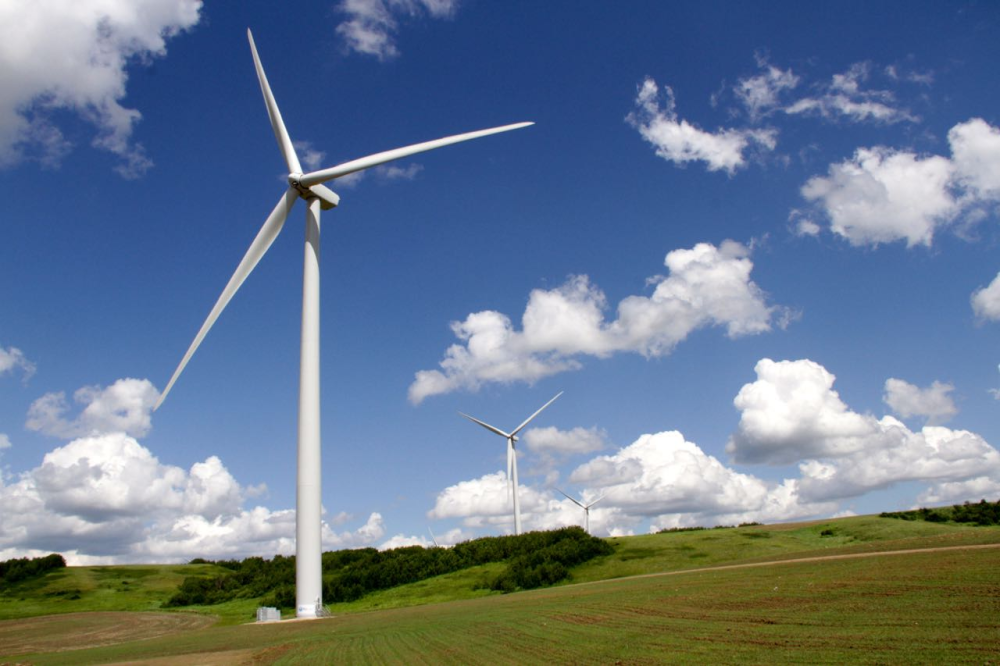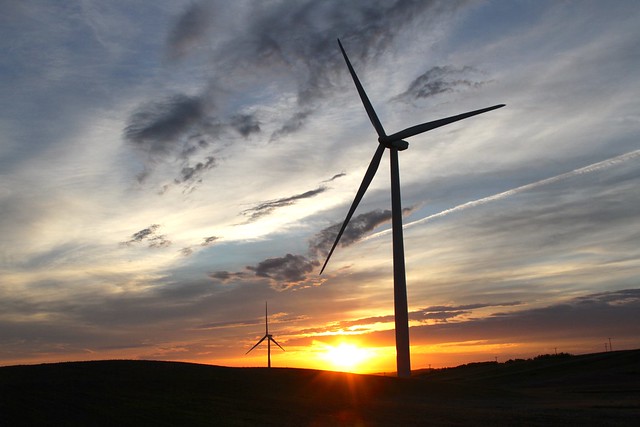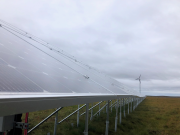The rolling hills south of Wainwright, Alberta, are home to some of the most beautiful aspen parkland in existence. Nearby, just north of Provost, you can see the sleek figures of 17 wind turbines, each 80 metres tall, poking their heads above the aspen tree line. But these turbines are doing more than just keeping the lights on. They are powering the future of Alberta’s children. In a unique agreement, the Bull Creek Wind Farm, a 29-megawatt facility, provides 500 schools around Alberta with 100 per cent of their energy needs. 
Wrangling 25 school boards into a long-term contract for renewable energy was no easy task, but as Lorne Young, a school trustee with St. Paul Education Regional Division No. 1, explains, it required leadership and an understanding of the importance of securing price certainty. “I think that a majority of the people on the board like the idea that we're part of a renewable energy project. We are an educational institution and we want to teach kids about that too,” says Young. “We're an oil producing province but we also know we need to diversify it. So, we like being part of that. The predictability on the cost side is one thing, but we want to be part of a good project too.”
On June 9, Young joined other dignitaries at the Bull Creek Wind Farm for its official opening. “This project's really unique, we're quite proud of it. We have a partnership with a collection of 25 rural Alberta school boards, and that was facilitated through a purchasing group called the Commodity Purchasing Consortium, CPC,” says Grant Arnold, CEO of BluEarth Renewables.
Carbon tax free zone
Neither Arnold nor school board officials would disclose the terms of the agreement, but Arnold says “It's a very good price over the long term, and in fact new wind farms are built at a price that's compatible with new natural gas-fired power. The cost of wind power and other renewables has dropped significantly.” Francois Gagnon is the superintendent of the Fort McMurray Catholic Board of Education and a representative of the CPC who finalized negotiations for the project. “We believe that we have a good price, a competitive price as far as electricity is concerned, but also it's a price that we know is there for the next 25 year,” says Gagnon. “So there's the stability for us, and then as the price of carbon goes up, it becomes a better deal for us.” And this last point is a benefit of the getting your electricity from wind power. While other districts are wondering what the impact of the carbon levy will have on their power rates, these 25 districts have carbon-free electricity and will pay no carbon fees for it.
In a deregulated market, cheap debt is key
Deregulation is fine and dandy, but getting funding for renewable energy projects with no power contract is no easy task. However, the agreement with the school boards allowed BluEarth Renewables to secure competitive financing from ATB Financial. “A wind farm like this, or in fact many other projects that have a large capital upfront cost, are funded with equity and debt … the long-term contracts allowed us to get very, very competitive debt on the project, which brought the price of power down, which is key in the whole scenario,” says Grant Arnold, CEO of BluEarth Renewables.
Farming the wind
 Bull Creek Wind Farm sits on land belonging to David Blume and his son Scott, who’ve farmed in the region for five generations. “It's not like an oil company. An oil company has the right to develop their minerals. A wind group has to get the farmer's consent to develop on a farmer's property,” says David Blume. The farmers charge rent for the land and then negotiate snow clearing, maintenance and other service contracts with the developer. “You have full opportunity to get involved,” says David Blume. “We signed on with a 30-year contract with a 25-year renewable. So, that'll outlive me. But it's awesome, it's another income source there too. Like I say, we have the farm, we have other investments too, but this is a residual income. It's here no matter if it rains or snows or whatever. So, it's good.” Blume’s son is getting a snow clearing contract and they’ve done other contracts for the wind company. Blume’s one regret was not paying closer attention to the design of the roads, some of which created little wedges of land too small for his large farm equipment. Bull Creek is a little more than half the size of the original plan for the project, so it’s possible the wind farm could be expanded.
Bull Creek Wind Farm sits on land belonging to David Blume and his son Scott, who’ve farmed in the region for five generations. “It's not like an oil company. An oil company has the right to develop their minerals. A wind group has to get the farmer's consent to develop on a farmer's property,” says David Blume. The farmers charge rent for the land and then negotiate snow clearing, maintenance and other service contracts with the developer. “You have full opportunity to get involved,” says David Blume. “We signed on with a 30-year contract with a 25-year renewable. So, that'll outlive me. But it's awesome, it's another income source there too. Like I say, we have the farm, we have other investments too, but this is a residual income. It's here no matter if it rains or snows or whatever. So, it's good.” Blume’s son is getting a snow clearing contract and they’ve done other contracts for the wind company. Blume’s one regret was not paying closer attention to the design of the roads, some of which created little wedges of land too small for his large farm equipment. Bull Creek is a little more than half the size of the original plan for the project, so it’s possible the wind farm could be expanded.
Blume notes that green energy was one of the NDP government’s platforms. “They want to replace the coal too, so to replace the coal we need 27,000 wind turbines in the province and so... And we've only got maybe 300 right now, well... A few more than that. But, we definitely have a huge upside for development on the wind turbine side.” Also at the Bull Creek opening was David Shepherd, MLA for Edmonton Centre, who confirms that more wind development is coming. “As you know, we're moving ahead with our commitment to transitioning Alberta away from coal-fired to 30 per cent renewables and natural gas here in the province, so we're going be moving completely to a brand new mix, I think, as we move forward with that and invest some of the funds that are going come in through the levy on carbon. We're going see a lot more of these projects springing up,” says Shepherd.











